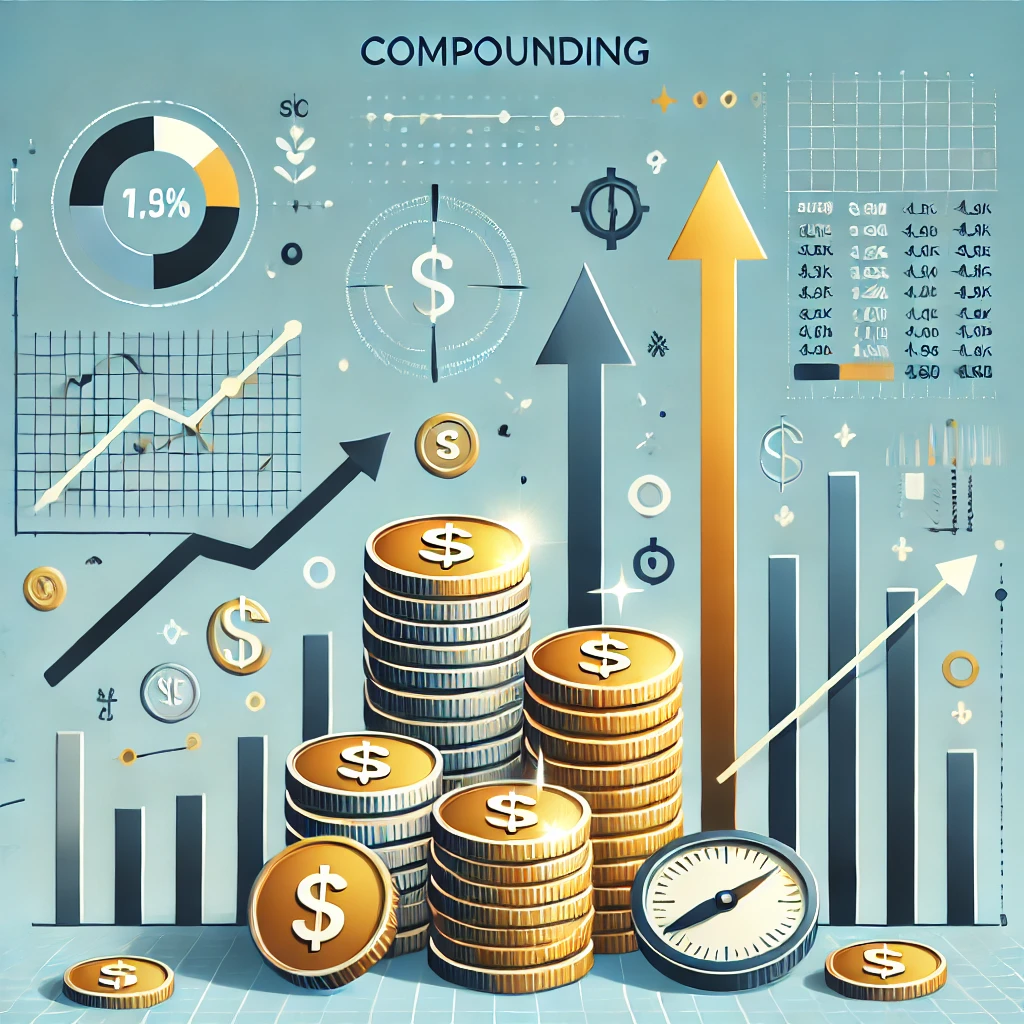


The Power of Compounding for Long-Term Financial Growth
In the realm of finance and investing, the principle of compounding stands out as one of the most powerful tools for wealth creation. Compounding refers to the process by which an investment's earnings—whether interest, dividends, or capital gains—are reinvested to generate additional returns. Over time, this creates a snowball effect, accelerating the growth of the investment and producing substantial gains in the long run.
Explores the mechanics of compounding, why it’s so impactful, and how investors can leverage it to achieve long-term financial success.
1. What is Compounding?
Compounding occurs when an investment generates earnings on both the original principal and on the accumulated earnings from previous periods. This reinvestment creates a cycle where each round of growth builds on the previous one, leading to exponential gains over time.
For example, if you invest $10,000 at a 5% annual return, you’ll earn $500 in the first year, increasing the total value to $10,500. In the second year, you earn 5% on $10,500, resulting in $525 in earnings. Over time, the returns themselves generate further returns, leading to significant growth even without additional contributions.
2. The Role of Time in Compounding
The true power of compounding is best demonstrated over long periods. The longer an investment is left to grow, the more pronounced the compounding effect becomes. This is because each cycle of reinvestment adds to both the principal and the accumulated returns, causing the investment to grow at an accelerating rate.
Time is the greatest ally of compounding. The earlier you start investing, the more time your money has to grow, and the larger your returns will be in the long run.
3. Why Compounding is Essential for Long-Term Investors
a. Exponential Growth
Compounding doesn’t grow your wealth in a linear fashion. Instead, it produces exponential growth. As your earnings begin to generate their own earnings, the growth accelerates over time, leading to much larger sums than simple interest would provide.
b. Cushioning Against Volatility
One of the benefits of long-term investing is the ability to ride out short-term market fluctuations. Over the long term, markets tend to recover from downturns, and compounding allows investors to benefit from this overall growth. While short-term volatility may cause temporary losses, compounding helps smooth out returns over the long haul.
c. Reinvesting Dividends and Interest
By reinvesting dividends and interest, investors can maximize the compounding effect. Instead of taking the profits from dividends or interest as income, reinvesting them into the portfolio allows the earnings to generate further returns, accelerating the overall growth.
4. Discipline and Consistency: Key Factors in Compounding
The full benefits of compounding require a long-term perspective, consistency, and discipline. Investors need to resist the urge to withdraw earnings or make rash decisions based on short-term market movements. Staying the course is crucial for allowing compounding to reach its full potential.
a. Dollar-Cost Averaging
One common approach to long-term investing is dollar-cost averaging, where investors regularly contribute a fixed amount, regardless of market conditions. This strategy reduces the impact of volatility by averaging out the purchase price over time and allows compounding to work its magic.
b. Patience and Long-Term Thinking
The power of compounding is most effective when left undisturbed. The key to maximizing returns through compounding is to remain patient, keep reinvesting returns, and allow time to work in your favor. Even modest initial investments can grow substantially over time if left to compound.
5. The Impact of Taxes and Fees on Compounding
While compounding is powerful, taxes and fees can erode its effectiveness if not managed properly. High fees and frequent trading can diminish returns, while taxes on dividends and capital gains can also take a bite out of earnings.
a. Tax-Advantaged Accounts
One way to maximize the benefits of compounding is to use tax-advantaged accounts, such as retirement accounts (e.g., IRAs, 401(k)s), where earnings can grow tax-deferred. This allows the full effect of compounding to take place without the drag of taxes until withdrawals are made.
b. Minimizing Fees
Investors should be mindful of fees, especially in actively managed funds or high-fee investment vehicles. Opting for low-cost index funds or exchange-traded funds (ETFs) can help reduce the cost burden and allow compounding to work more effectively.
6. Compounding in Different Asset Classes
Compounding can be applied across various asset classes, but its effects are particularly potent in equity investments, which tend to offer higher long-term returns compared to fixed-income investments like bonds. However, the principle of compounding applies broadly, and even conservative portfolios can benefit from it.
7. The Power of Starting Early
The earlier you start investing, the more time compounding has to work its magic. Even small, consistent contributions made in your 20s or 30s can grow into significant sums by retirement. Starting early provides an invaluable advantage, as the longer your money is invested, the more dramatic the compounding effect becomes.
For younger investors, compounding can turn relatively small investments into substantial wealth over time. For those starting later, the principle still works—though maximizing contributions and staying disciplined become even more critical.
Conclusion: Compounding is the Key to Long-Term Wealth
Compounding is one of the most powerful forces in investing, and its benefits are maximized with time, discipline, and consistency. Whether you're saving for retirement, building an education fund, or growing your wealth for other long-term goals, the principle of compounding is key to achieving significant financial growth.
By understanding how compounding works and making smart, consistent investments, you can unlock the potential for exponential growth in your portfolio. The earlier you start and the more disciplined you are in reinvesting returns, the greater your long-term financial success will be.